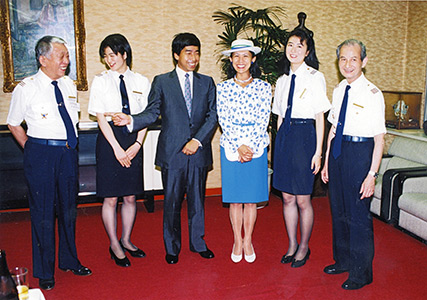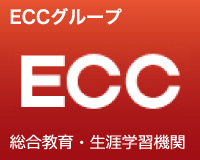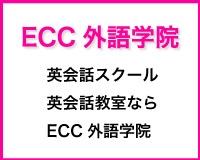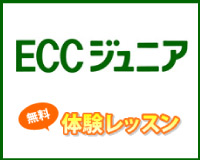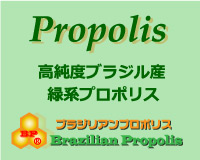Graphic History of Kiyotada Tazaki
*Click parts shown with underlined blue letters for further elaboration.
1930 - Birth Info -
Birthdate: November 15, 1930
Birthplace: Ota-ku, Tokyo
Born near Anamori Shrine located close to Haneda Airport. Being bathed as a baby while listening to airplanes taking off and landing provided him with strong interest in airplanes while growing up. |
 |

1937 - Grade School -
| Entered Toyokawa Elementary School, Kita-ku, but when in the 4th grade moved to Yanagida Elementary School, Kita-ku. This school was burned down later by an air raid. |

1943 - Middle School -
| Entered the Department of Aircraft, Tokyo Metropolitan Aviation Middle School. Among the classmates was Masumi Muramatsu, a pioneer simultaneous interpreter and founder of Simul International, Inc. |

1944年 - World War II -
| Wartime Japan mobilized even middle school students to work at munitions factories. When in the 9th grade, Kiyo’s class was called to help make tornado-type bombs at Riken Odaiba Plant. Air raids by B-29s were in full swing, and the plant was bombed killing many college girls working on the premises. Observing the tragic scenes, Kiyo somehow concluded there should be no war. |
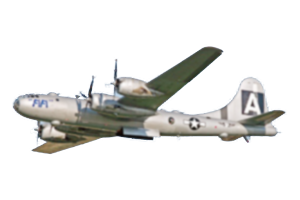 |

1945 - War Ended -
His house in Oji, Kita-ku, burned down by a large-scale air raid in March, Kiyo was forced to evacuate to Koga, Ibaraki Prefecture, where his mother’s family home was located.
On August 15, World War ended with Japan surrendering to the Allied Forces. Japan was now not allowed to build their own planes, thus crushing Kiyo’s lifelong dream of designing airplanes.
In September, NHK Radio started an English conversation program by Tadaichi Hirakawa.(*1) Disillusioned and searching for what he would and could do, Kiyo quickly became a great fan and diligent student of this program. |
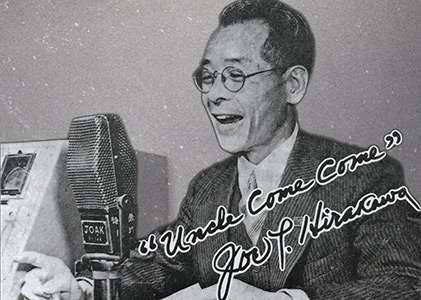 |

1947 - Prep to Challenge Entrance Exams -
| Because the Aviation Middle School had been burned down during the war, Kiyo transferred to Ibaraki Prefectural Technical High School in Koga.With mounting interest in studying English, Kiyo decided to further his education in college. He started to prepare for entrance exams to the Department of English, Tokyo Higher Normal School, one of the nation’s top-ranking teacher education institutions. |

1948 - Tokyo Higher Normal School -
| Admitted to Tokyo Higher Normal School, Kiyo now started on his way to becoming a teacher of English. This school, which later became Tokyo University of Education and then current Tsukuba University, was at that time dotted with such well-known academics as Rintaro Fukuhara (William Shakespeare), Rikutaro Fukuda (Comparative Literature), and Seiju Narita (American Literature). |

1952 - Graduation -
| Wrote a graduation thesis on Scott Fitzgerald, a member of the Lost Generation. Fitzgerald at that time was being highlighted as a center of the “Revival of Interest” as the Life magazine featured him. With materials and resources limited, Kiyo spent most of his time studying at the CIE Library, American Civil Information and Education Library in Hibiya, in order to complete his 28-page thesis in English. |
1952 - Teacher at Koga Daiichi High School -
| Graduated from Tokyo Higher Normal School and became a teacher of English at Ibaraki Prefectural Koga First Senior High School which he had graduated from. Tokyo Tsushin Kogyo, forerunner of Sony, marketed the nation’s first tape recorder. Interested, Kiyo quickly convinced the principal, saying that the new machine would be highly instrumental in improving the students’ pronunciation, and succeeded in purchasing the expensive recorder. Not knowing how to utilize the recordings effectively, he recorded the naniwa-bushi, chanted narratives, of Torazo Hirosawa, and played them in his English classes at school. The students were happy because they now did not have to study English, but the principal was not at all amused. Kiyo was called to the principal’s office and had a hard time trying to explain the correlation between naniwa-bushi and English pronunciation. Experience with the new recording mechanism, however, helped Kiyo learn so much about audio-education principles and techniques, and eventually paved a way to his publication of “Audio-Visual Techniques in English Teaching” (Taishukan Publishing Company) later. |

1955 - Tokyo Univ. of Education -
| Invited back to Tokyo University of Education, renewed Tokyo Higher Normal School, Kiyo started to teach at the university’s attached junior and senior high schools. He also taught part-time at Keio University, Chiba University, and Toyo Women’s Junior College. |

1956 - Study Abroad -
| Became a Fulbright grantee and went to the English Language Institute, University of Michigan, where he studied structural linguistics and audio-visual education theories. The U.S. Office of Education sent Kiyo as his community assignment to the State of Wyoming to be exposed to the life and culture of the Old West. Later, in August 1977, then Governor Ed Herschler gave him the title of “Bona Fide Cowboy,” honorary statesman, for his contribution of introducing Wyoming to the Japanese public through his TV shows and writings. |

1957 - First Book Out -
| Returned to Japan from the States and resumed teaching at Tokyo University of Education attached schools. Also began to write actively on language teaching. His first book was “Audio-Visual Techniques in English Teaching” (Taishukan Publishing Company, Tokyo). |

1961 - NHK Television -
| Instructor on NHK-TV English Conversation Programs. Wrote the scripts, performed on TV, and published the follow-up recordings for the next 16 years until 1977. Since the programs aimed at introduction of the life of the U.S.A. as well as teaching practical English, Kiyo spent every summer vacation visiting the U.S. to gather materials he could use on his programs, eventually accomplishing the “all fifty states visits.” |
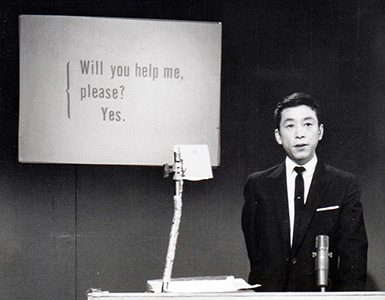 |

1966 - Yokohama National University -

1968 - Assistant Professor -
| Became assistant professor. |

1973 - Mayor of Honolulu Trophy Contest -

1976 - Became the Chief Judge of the Prince Takamado Trophy -

1977 - Broadcasting Award -
| Received Broadcasting Culture Fund Award by NHK for the merit of contribution to completing basic formats and formulas of language programs on television. |
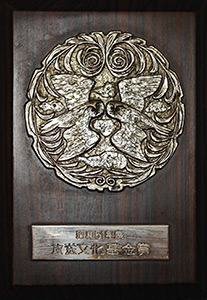 |

1978 - Instructor of Radio Programs -
| Instructor of “English for Millions” broadcast by Bunka-Hoso Radio Station. While teaching on regularly-scheduled programs, Kiyo wrote scripts, produced and performed in 90-minute specials like “Tojin Okichi,” “America Hikozo,” and “77 Samurai Visit America.” Funded by Japan YMCA, he also developed a series of “3-Minute Telephone English.” |

1996 - Retired from Yokohama National and Moved to Tokyo Junshin -
| Retired from Yokohama National University and became a professor emeritus. In April the same yearl, Kiyo started teaching at Tokyo Junshin Women’s College as Chair of the Department of British and American Culture. |

1999 - Business English Interpreter Certification -
| Appointed Chairperson of the Committee for Certification of Business English Interpreters affiliated and sponsored by the Tokyo Chamber of Commerce. The position held until 2001. |

2000 - President -
| President of Tokyo Junshin Women’s College. |
 |

2008 - Resignation -
| Resigned from the office of the President into a free-as-a-bird life. Currently contemplating building a Super Ultralight(*5), assisted by his son-in-law Daniel Max Williams of Miami, Florida. |
 |

2010 - Imperial Decoration -
| Conferred a Decoration by the Emperor of Japan with the Order of the Sacred Treasure, Gold Rays with Neck Ribbon. |
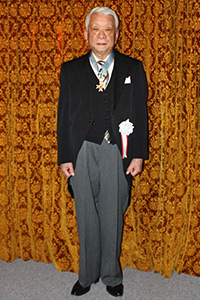 |

2012 - NPO -
| Founded the NPO (Non-Profit Organization) “Overseas Culture Center” and assumed the position of the Executive Chairman. |

2016 - Farewell Speech at Imperial Reception -
| Recording of Farewell Speech delivered at the Imperial Reception of H.I.H. Prince Takamado Trophy All Japan Inter-Middle School English Oratorical Contest at the Peacock Room, Imperial Hotel, Tokyo.Recording of Farewell Speech(English) |
※To listen to the recording, please tap the underlined part. |

2021 -Current Involvements -
①Executive Chair, Non-Profit Organization Overseas Culture Center of Japan
②Auditor, Public Service Corporation of Hospital Accreditation of Joint Commission International
③Honorary Chief Judge, Prince Takamado Trophy All-Japan Inter-Middle School English Oratorical Contest, sponsored by the Yomiuri Newspaper Company
④Chief Judge, Mayor of Honolulu Trophy All-Japan Youth English Oratorical Contest sponsored by the ECC
⑤Chief Judge, Kiyotada Tazaki Trophy Private Junior High School English Recitation Contest
⑥Chief Judge, Kiyotada Tazaki Trophy Elementary School Student English Recitation Contest in SHONAN
|



















